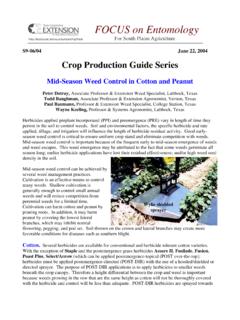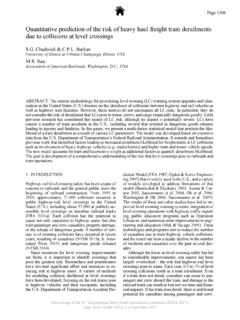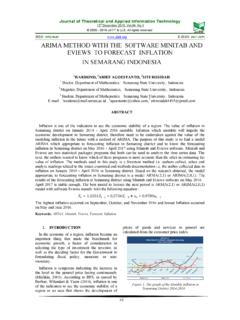Transcription of 2016 Grain Sorghum Performance Tests in Texas
1 SCS- 2016 -29. 2016 Grain Sorghum Performance Tests in Texas 2. 0. 1. 6. Department of Soil and Crop Sciences Ronnie Schnell - Assistant Professor & Extension Specialist Dennis Pietsch - Director, Crop Testing Katrina Horn - Agricultural Research Assistant Jonathan Moreno - Agricultural Research Assistant Seth Hirst - Agricultrual Research Assistant W. L. Rooney - Professor, Plant Breeding and Genetics Gary Peterson - Professor, Grain Sorghum Breeding and Genetics The Texas A&M University Systems 2016 Grain Sorghum Performance Tests . IN Texas . by Ronnie Schnell, Dennis Pietsch, Katrina Horn, Jonathan Moreno, Seth Hirst, W.
2 L. Rooney, and Gary Peterson SCS- 2016 -29. Respectively, Assistant Professor & Extension Specialist; Director, Crop Testing;. Agricultural Research Assistant; Agricultural Research Assistant; Agricultural Research Assistant; Professor, Plant Breeding and Genetics, Department of Soil and Crop Sciences, Texas A&M AgriLife Research, The Texas A&M University System, College Station, Texas ; Professor, Grain Sorghum Breeding and Genetics, Texas A&M AgriLife Research, Lubbock, Texas . TABLE OF CONTENTS. Introduction .. 1. Selecting Hybrids & Varieties .. 1. Field-Plot Techniques.
3 3. Data Analysis & Reporting .. 4. Agronomic Data as Designated by Company .. 4. Measured Agronomic 5. Rainfall .. 5. Maps: Figure 1. Grain Sorghum Performance Trial Locations & Production Regions .. 3. Figure 2. 2016 Texas Water Year Total Rainfall .. 6. 2016 Grain Sorghum Hybrid Characteristics .. 7. Grain Sorghum Company Contact Information .. 10. Monte Alto Full .. 11. Monte Alto Limited .. 15. Gregory .. 17. Danevang .. 20. Medina County .. 23. College 27. 30. Hill County .. 34. 38. Lubbock .. 40. Hereford .. 42. Perryton .. 46. Literature Cited and Acknowledgements.
4 50. 2016 Grain Sorghum Performance TRIALS IN Texas . Ronnie Schnell, Dennis Pietsch, Katrina Horn, Jonathan Moreno, Seth Hirst, W. L. Rooney, and Gary Peterson Introduction Texas A&M AgriLife Research conducts the Grain Sorghum Performance Tests each year to provide growers in Texas with accurate and unbiased information on hybrid Performance at locations across the state. Selection of superior hybrids that are well adapted for a given region is essential for maximizing yield and profit. This year, six irrigated and six non-irrigated test sites were planted in the major production regions of Texas .
5 Major Grain Sorghum production regions include the Western Gulf Coastal Plain, Southern Texas Plains, East Central Texas Plains, Texas Blackland Prairies and High Plains. Approximate locations of the 2016 test sites are shown in Figure 1. A total of 327 entries were evaluated across 12 locations representing 55 unique hybrids from 13 commercial seed companies. Commercial seed companies enter hybrids into each trial location at their own discretion. Performance trials are conducted by personnel from the Crop Testing Program, Texas A&M. AgriLife Research, and financed by fees collected from participating commercial seed companies.
6 Test sites are on privately owned farms or at Texas A&M University AgriLife Research Centers. All entries are randomized and replicated four times at each location. All test sites are managed according to practices common to each production region. Field maps and planting plans can be found at the link below shortly after planting. Following harvest, results are statistically analyzed and made available at: Suggestions for Selecting Hybrids and Varieties Variety or hybrid selection is often the first decision a grower must make each crop year. The goal is to identify hybrids with superior Performance (top yielding) for your environment.
7 Many environments exist in Texas with significant variation within regions and across years, mostly due to variation in weather. Documented, consistent yield Performance within a region is essential for selecting hybrids that will perform well on your farming operation. This means that evaluation of hybrids over multiple locations and years (when possible) is the best way to predict future Performance . Exercise caution when using single location data to compare hybrid Performance . Following yield Performance , other characteristics may be useful for selecting the best hybrid.
8 Maturity or days to flowering may be important for selecting hybrids that are appropriate for your growing season/conditions. Typically mid- and full-season hybrids will respond favorably to additional moisture while early or short season hybrids are designed for dryland production with 1. lower moisture requirements. Selecting the wrong maturity hybrid can result in poor yields in dry environments or the inability of a hybrid to produce higher yields if the moisture profile is favorable. As water becomes more limited, drought tolerance becomes a critical component for production.
9 Most Sorghum hybrids possess good levels of pre-flowering drought tolerance, but there is a wide variation for post-flowering drought tolerance, and in most years post flowering drought is more common in Texas . Therefore, producers should ask seed companies for the relative level of post- flowering drought tolerance (or staygreen) their hybrids possess. Producers should realize that plant height and Grain yield are correlated and while there are exceptions, taller hybrids generally have higher yield potential. Likewise taller hybrids require greater management, but if they possess good post-flowering drought tolerance (or staygreen) they should have good standability.
10 Finally, variation for Grain quality exists in Grain Sorghum and there are several hybrids that are now used in food Grain markets. A list of these hybrids is provided by the National Grain Sorghum Producers ( ). These hybrids have white or cream-colored Grain and straw colored glumes with tan plant color. While these hybrids are not suitable in all regions, in certain environments these hybrids yield comparably to traditional hybrids and may provide additional marketing opportunities. 2. Figure 1. 2016 Grain Sorghum Performance Trials: Locations and Production Regions Field-Plot Techniques Performance trials are conducted at each location using a randomized complete block design with four replications of each entry (hybrid).









